At KAK Industry, we understand the importance of precision and accuracy when it comes to firearm performance. We’ve received numerous inquiries regarding the potential deflection of our handguards, and we take pride in assuring our customers that our meticulous design process has resulted in minimal deflection.
In fact, we’ve gone the extra mile by incorporating oversized hardware and utilizing an HD barrel nut as integral components of our handguard design. These deliberate choices were made to ensure that our handguards offer exceptional rigidity and stability, thereby achieving a level of deflection that is well below industry standards.
When you choose our handguards, you’re selecting a product that has been engineered to provide not only superior protection against deflection forces but also an enhanced shooting experience that you can rely on with confidence.
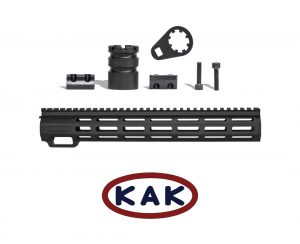
Unveiling Deflection Data: A Thorough Investigation into AR15 Handguard Performance
In our pursuit of transparency and delivering accurate information to our valued customers, we embarked on a comprehensive data-gathering mission. Our primary goal was to provide you with a precise representation of what you can expect when using our AR15 handguards.
To achieve this, we meticulously collected a diverse array of handguards from various manufacturers, all of which closely matched the length of our most popular handguard size. This meticulous approach ensures that the data we present is not only thorough but also directly applicable to your needs.
By subjecting these handguards to rigorous testing and analysis, we are committed to providing you with insights that not only showcase the superiority of our products but also empower you to make informed decisions that align perfectly with your shooting desires.
KAK Industry: 13” Mlok
Aero Atlas: 12.7″ One S Mlok
BCM: 13” MCMR Keymod
CMT: 13” CMR Mlok

A Respectful Examination of Handguard Deflection Assessment
It’s essential to emphasize that our intentions are rooted in providing an objective and unbiased assessment of handguard deflection. We want to unequivocally state that our endeavor is not intended to belittle or criticize other manufacturers’ offerings. We have the utmost respect for the quality and craftsmanship that these manufacturers bring to the table, and we recognize the value they contribute to the firearms industry.
The handguards we tested were sourced from employee-owned rifles, chosen solely based on their similarity in length to our popular models. This approach was taken to ensure the validity and integrity of our comparisons. Our aim is to provide a comprehensive perspective that showcases the strengths of various products in a fair and equitable manner. By sharing these findings, we hope to contribute positively to the collective knowledge base and assist firearm enthusiasts in making well-informed decisions that align with their unique preferences and requirements.
Analyzing Load-Induced Deflection at 100 Yards
In our pursuit of accurate and practical insights, our focus was straightforward: we aimed to uncover the extent of rail deflection that occurs when a handguard is subjected to a load, specifically at a distance of 100 yards. This precise and controlled testing parameter allowed us to gauge the real-world performance of each handguard under conditions that closely mimic typical shooting scenarios.
By concentrating on this specific aspect of performance, we’ve been able to provide you with concrete data that sheds light on how different handguards handle load-induced deflection, empowering you with the knowledge you need to make an informed decision about your firearm setup.
Our commitment to transparency and our dedication to delivering factual results drive us to share these findings openly, ensuring that you have access to information that can significantly influence your shooting experience.
Dual Load Simulation: Handguard Performance in Realistic Shooting Scenarios
Weight was methodically added to the handguards while in an upright position and also when flipped upside down. This deliberate methodology allowed us to simulate the load experienced both from the top and bottom, replicating real-world shooting conditions.
It’s important to highlight that our testing produced distinct deflection results for both top and bottom load scenarios. This two-fold analysis provides a comprehensive view of how our handguards perform under varying stress points, ensuring that you have an exact understanding of their capabilities in different shooting situations.
Maximum Load Capacity: Insights from Bipod Loading on a 13” Handguard
During our testing process on a 13” handguard, a significant discovery emerged: the threshold for maximum weight applied when loading a bipod on this particular handguard length was approximately 15 pounds of force. To precisely replicate this load, we cleverly employed a mesh bag filled with 15 pounds of 9mm rounds. This innovative approach not only allowed us to simulate the exact weight exerted during bipod loading but also ensured consistent and reliable results.
Our Precision Testing Methodology: Handguard Deflection in Realistic Scenarios
Our commitment to precision led us to establish a uniform testing methodology for each upper receiver. To maintain consistency, we selected a 3.5” 9mm barrel, eliminating the potential of handguards bottoming out on gas blocks that might be present on a more appropriate barrel length. Employing each manufacturer’s recommended torque value, we carefully secured the barrel nut.

Each upper receiver was placed in an exact position on a stable table surface. A clamp was strategically affixed to the back of the upper receiver in a carefully predetermined location. It’s worth noting that the rubber covering seen in the images was intentionally removed before testing, reducing any possible movement prior to the evaluation process. By gently advancing the receiver, we ensured that the handguard remained suspended above the table, preventing any contact that could impact the results. To validate the accuracy of our setup, we employed a tape measure and a Bosch laser to precisely measure a distance of 25 feet for consistency across all tests.


For drift measurements, a laser aiming module was positioned at the 2nd to last t-slot at the muzzle end of each handguard. A large piece of cardboard, placed at the 25-foot mark, served as the target surface. The exact laser position for each upper receiver was marked on the cardboard, establishing a reference point. With a weight of 15 pounds applied to the 22nd t-slot, we intentionally selected this position to closely align with where a carbine length gas block would typically be situated. This comprehensive setup allowed us to capture accurate data on drift amounts, ensuring a rigorous assessment of handguard deflection under real-world conditions.

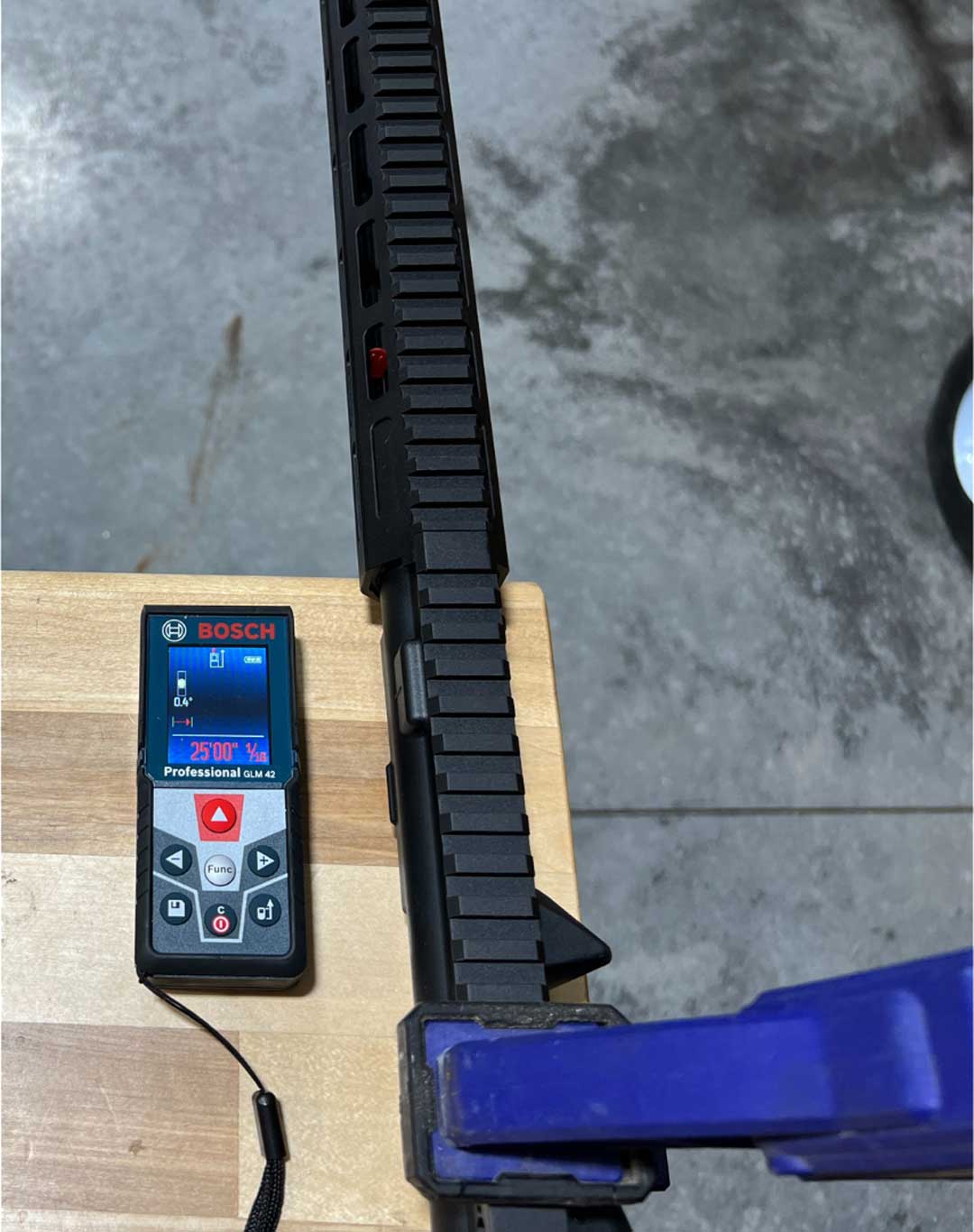
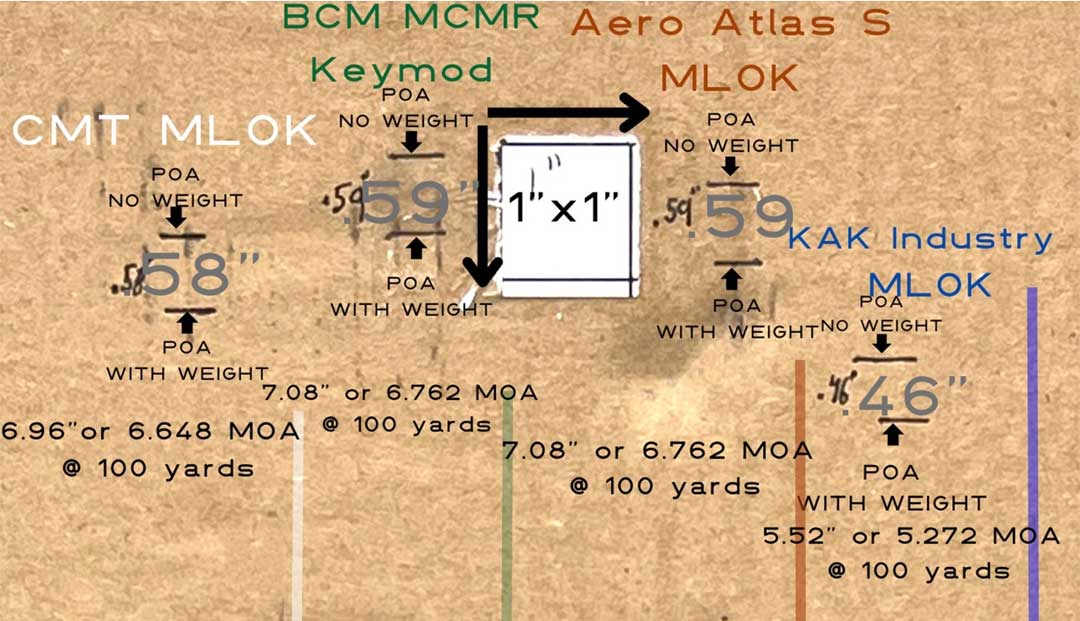
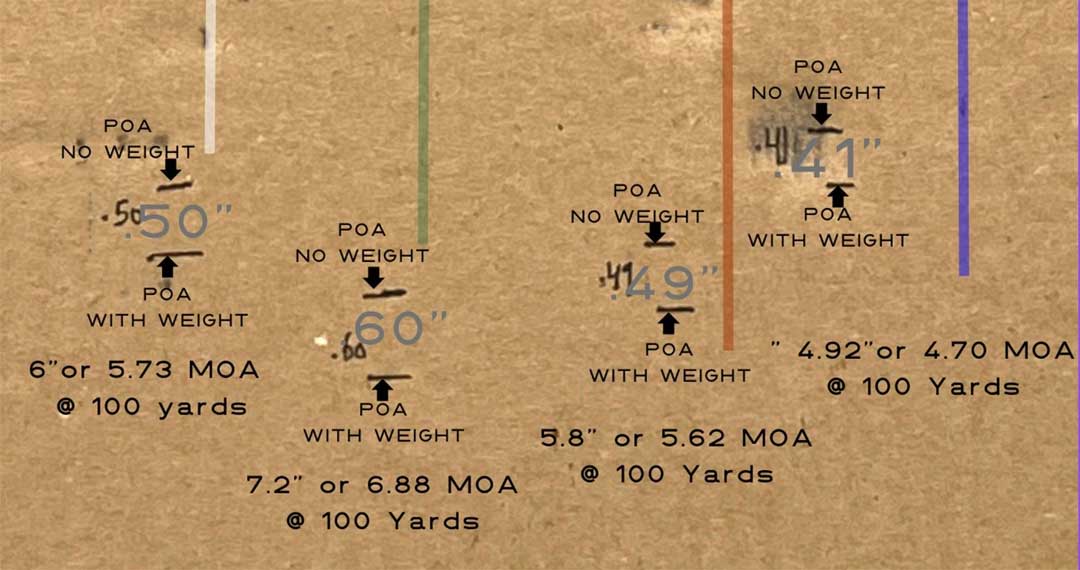
Handguard Deflection Results: Insights, Conversions, and Practical Implications
Our findings in the study provide valuable insights into handguard deflection and its implications. We quantified deflection amounts in inches, which were then converted to a standardized deflection per foot value by dividing by 25. Understanding that 100 yards equates to 300 feet, we extended this conversion to calculate the deflection amount at 100 yards: (Amount in inches / 25) × 300. These results serve as a foundational understanding of how handguards perform under load-induced stress.
It’s important to acknowledge that our results can serve as a basis for hypothesis to further distances. However, we recognize that handguards have a point at which they cannot bend any further before reaching a failure point. While our study did not continue testing to this extreme, these results offer valuable information about the potential deflection behavior of handguards under realistic shooting conditions.
By comprehensively understanding the deflection conversion at 100 yards, firearm enthusiasts and professionals can gain insights that contribute to informed decision-making, enabling them to optimize their setups for enhanced accuracy and performance.
KAK Industry 13” Mlok
Top Load Deflection- 5.27 MOA Bottom Load Deflection- 4.70 MOA
Aero Atlas 12.7″ One S Mlok
Top Load Deflection- 6.76 MOA Bottom Load Deflection- 5.62 MOA
BCM 13″ MCMR Keymod
Top Load Deflection- 6.76 MOA Bottom Load Deflection- 6.88 MOA
CMT 13” CMR Mlok
Top Load Deflection- 6.64 MOA Bottom Load Deflection- 5.73 MOA
In conclusion, our comprehensive study on handguard deflection has shed light on crucial aspects that impact firearm performance and accuracy. By meticulously quantifying deflection amounts and converting them to standardized values, we’ve provided a clear understanding of how handguards respond under load-induced stress.
While our focus was on the immediate deflection behavior at 100 yards, the insights gained can serve as a valuable reference point for theorizing longer distances. It’s important to acknowledge that handguards possess inherent limits beyond which they cannot bend without reaching a failure point. Although we did not explore these extreme conditions, our findings offer valuable guidance for real-world shooting scenarios.
Armed with this knowledge, firearm enthusiasts and professionals are empowered to make well-informed decisions when configuring their setups. The ability to optimize handguard choices for enhanced accuracy and performance is a testament to our commitment to providing accurate, actionable information that elevates the shooting experience.

🎯 Your input matters! As we continue our journey of testing and reviewing various firearm accessories, we’re eager to hear your preferences. Share your thoughts below on the handguards you’d like to see us put to the test next. Your feedback guides our efforts to provide you with insightful and relevant content. Together, let’s shape the future of our testing lineup and ensure we’re delivering exactly what you’re looking for. Shoot your suggestions down below – we’re all ears! 🔍🔧🔫

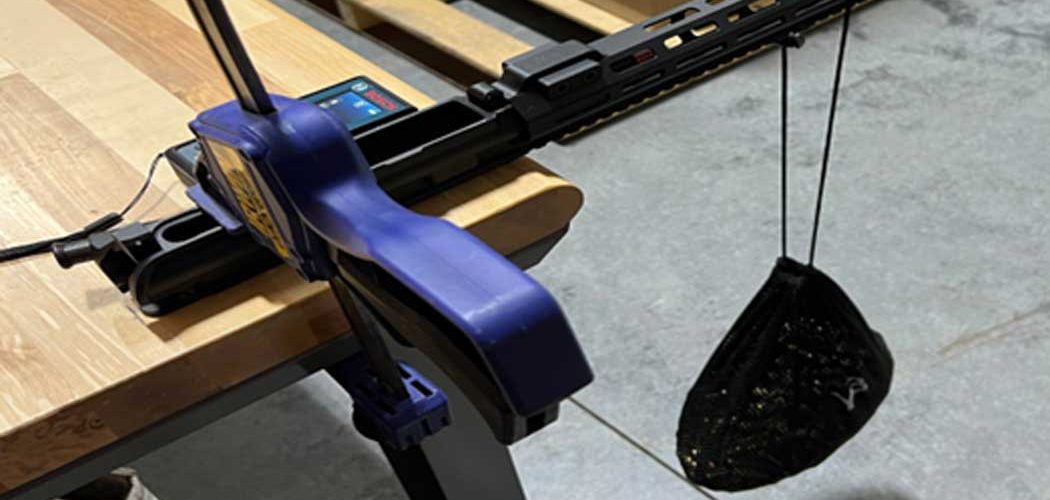
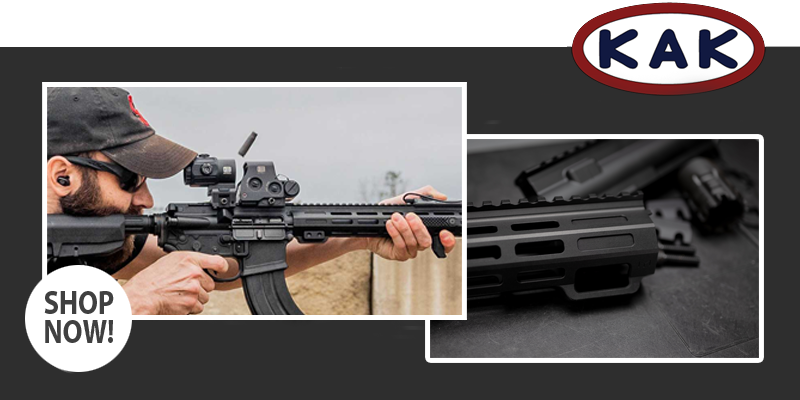
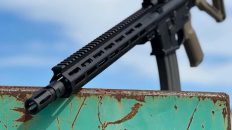
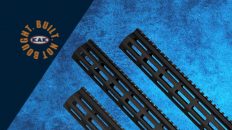
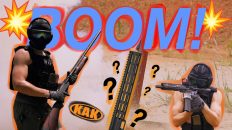
Brilliant. Easy to follow procedure.
Thank you Mark. 👍
Can you elaborate on how this is likely to effect accuracy?
Obviously handguard deflection (e.g.from bipod or sling loading) can effect point_of-aim particularly if using rail-mounted iron sights or a rail-mounted aiming device like a laser, but how much effect is handguard deflection likely to have on bullet point-of-impact when using a typical receiver-mounted optic for aiming?
For the next round of testing I suggest using 15 inch handguards and bringing in offerings from Geissele and White Oak Armament.
I am surprised by the amount of deflection. I was testing Shaffer Machining rail mounted irons and found I had to max left out the windage to zero. On investigation I noticed the handguard was deflected left in relation to the barrel. Maybe due to using a loop sling as a shooter’s aid. Thinking I’ll have to go with an A2 barrel mounted front sight.